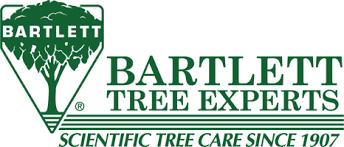A MASSACHUSETTS HORTICULTURAL SOCIETY PUBLICATION







It is with great sadness that I inform you that Wayne Mezitt passed away Thursday, July 18. As you know, he was a dear friend, mentor, leader and champion of this society.
A third-generation nurseryman, Wayne nurtured and grew the legacy passed to him and, in turn, passed a thriving Weston Nurseries on to the fourth generation son, Peter. Respected throughout the horticultural industry for his horticultural acumen, plant introductions and leadership of the modern retail garden center, he was a true ‘elder statesman’ of the plant world.
Wayne played an important role at Massachusetts Horticultural Society as a Board Member and transformational Chair of the Board from 2013 to 2021. During this period, he led and motivated a hardworking board who contributed greatly to the functioning of the Society with their time, expertise, and financial support, modeling generosity in all three of these areas. Wayne provided great stability through an important Master Planning process in 2018 and 2019, a senior
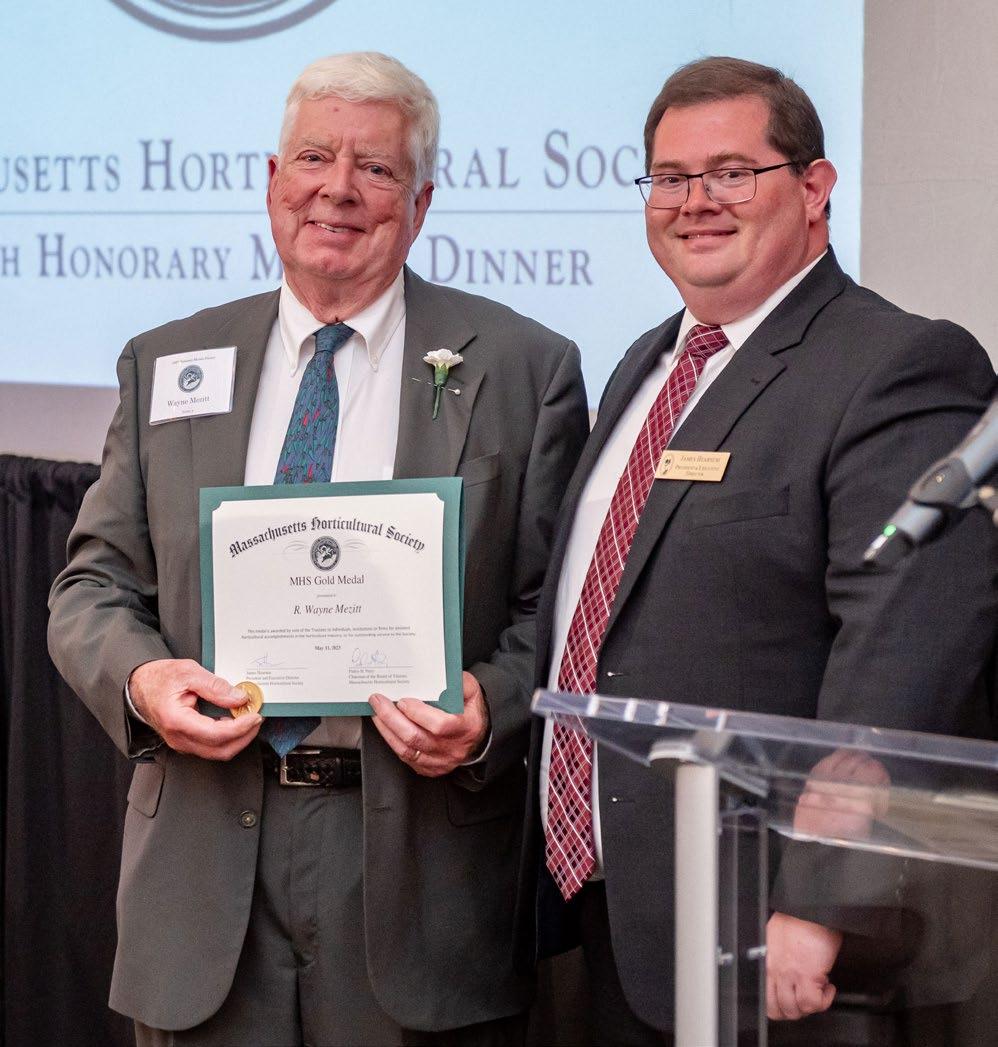
Continued on page 4...
Wayne receives the Gold Medal at the 120th Honorary Medals Dinner, May 2023.

leadership transition, and the effects of the pandemic. He remained a member of the Friends Council, Editor-in-Chief of the Leaflet, and a valued and trusted advisor. In 2023, Wayne was awarded the MHS Gold Honorary Medal for exceptional professional horticultural accomplishment and leadership service to the Society.
On a personal note, I found Wayne to be a uniquely caring man. Of national influence and significance to the horticultural industry, his special gift was a deep and authentic interest in each individual he came into contact with. Whether the leader of an organization or its most junior staff member, whether the biggest commercial landscaper or a first-time gardener looking for just their first few plants, Wayne wanted to have a relationship with you personally. His passion was to show everyone how they could have better lives if they grew amazing plants and his legacy lives on strongly in our mission.
We are deeply saddened by this loss and are forever grateful for Wayne’s contributions to our community.
James Hearsum President & Executive Director

Marianne Orlando is a landscape architect turned freelance illustrator who loves plants, and does commissioned drawings of homes, pets and people. You can see samples of her work at www.marianneorlando.com
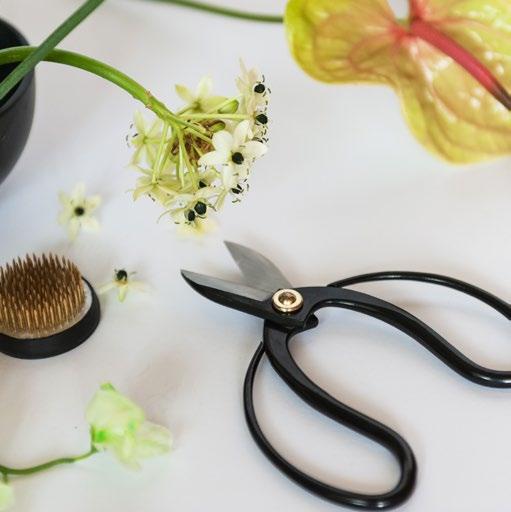
Six Week Beginners Ikebana Course
Tuesdays, Sept 3 - Oct 8 4-6pm

Prism and Patterns Watercolor Workshop
Tuesday, September 24 12:30–4:30pm

Guided Tours of the Arnold Arboretum
October 2, 10 or 15 10-11:30am

Guided September Garden Tour
September 11, 14 or 25 10-11:30am

Intro to Forest Bathing: Healing with Nature
Wednesday, September 25 10am–12pm

Hands On Workshop!
Forcing Bulbs for Indoor Blooms
Saturday, October 12 10-11:30am
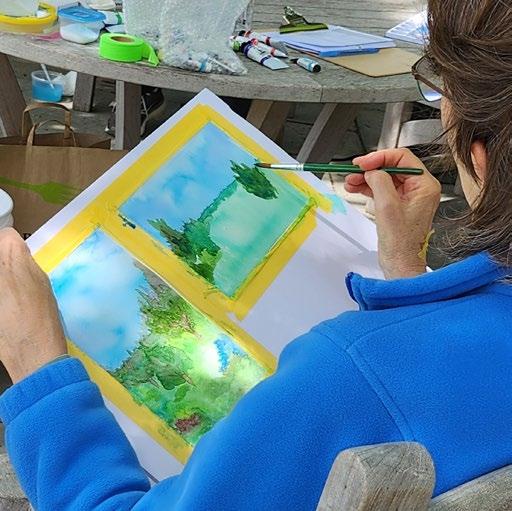
Nature Immersion in the Garden with Watercolors Wednesday, September 11 10am-2pm

Seed Saving 101 Thursday, September 26 10-11:30am

Digging, Dividing & Storing Dahlia Tubers
Tuesday, October 22 6:30–8pm
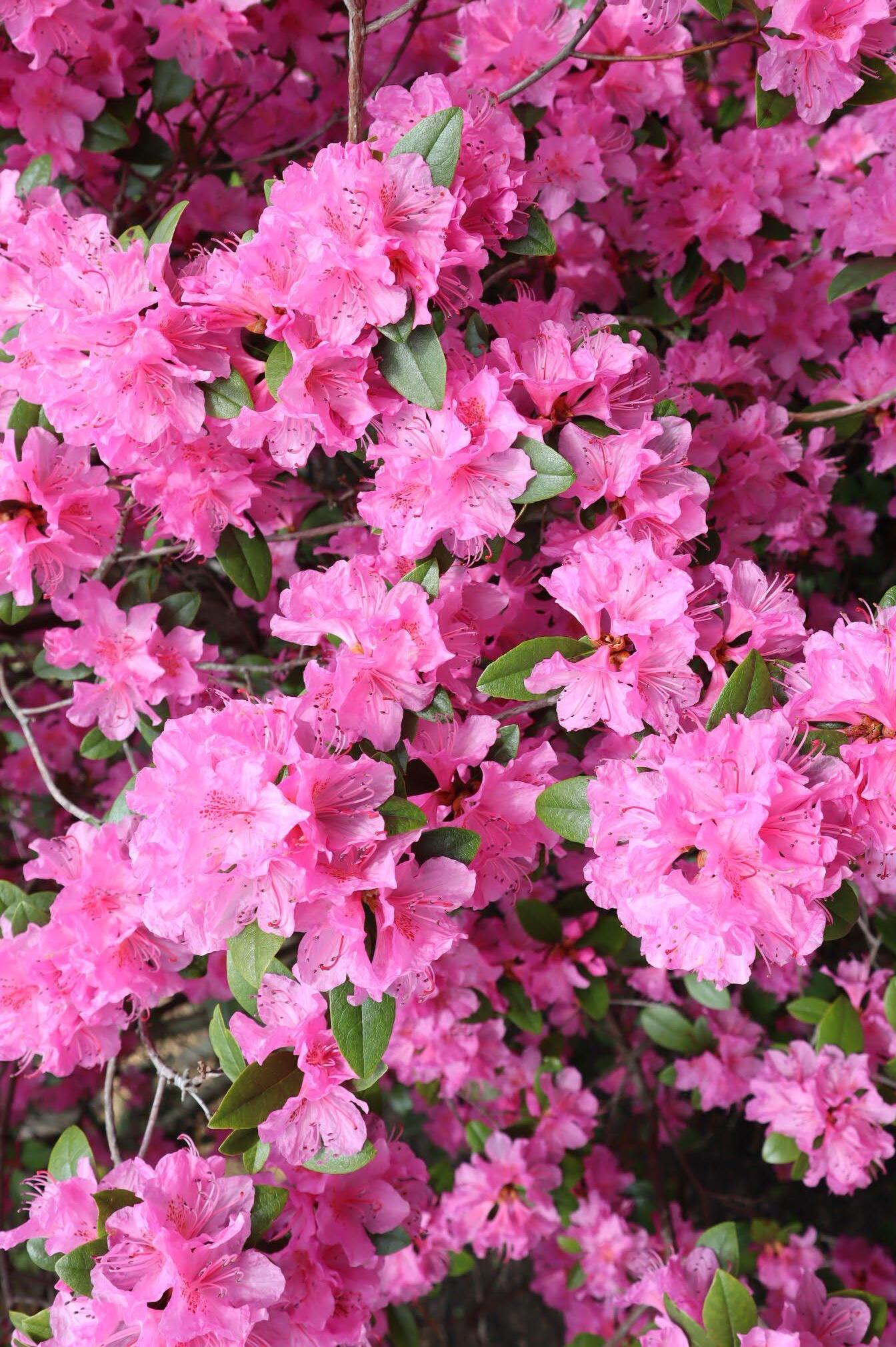
Join the Massachusetts chapter of the American Rhododendron Society (ARS) for a hands-on experience as they start a new cycle of rooting various cuttings. This FREE workshop provides a unique opportunity to delve into a long-standing practice with some of the area's best hybridizers and growers. The ARS has successfully propagated over 7,000 unique species and hybrids over the past decades.
MHS Members are invited to join the group as they work hands-on to prepare cuttings and place them in a rooting medium. These cuttings will then be placed in the greenhouses where they will root and work towards the next development stage. Coffee and Donuts will be provided.

Open Tuesday, August 13Sunday, August 25
Monday - Thursday from 10am7pm Entry Slots: 10am-12pm / 12-2pm / 2-4pm / 4-6pm (last entrance)
Friday - Sunday from 10am-5pm Entry Slots: 10-11am / 11am-12pm / 12-1pm / 1-2pm / 2-3pm / 3-4pm (last entrance)
$19 Adult / $10 Child / FREE Kids 2 and under
MHS Members: $5 for Pick-YourOwn / Free for View Only
▢ Click the link below to buy tickets
▢ FIRST: Select the date and time you wish you visit
▢ SECOND: Click the orange "Tickets" button
▢ In the "Promo code" box above the tickets, enter your Membership ID or your one-time code and click "Apply" — this will reveal your exclusive member-priced tickets!
▢ Add your tickets to cart and complete check out.
▷ Individual Members can add ONE MEMBER TICKET
▷ Dual Members can add TWO MEMBER TICKETS
▷ Supporter Members can add up to FOUR MEMBER TICKETS
If you have questions about your membership or need help purchasing tickets, please call 617-933-4904 during Garden hours. Advanced purchase of timed tickets is required.
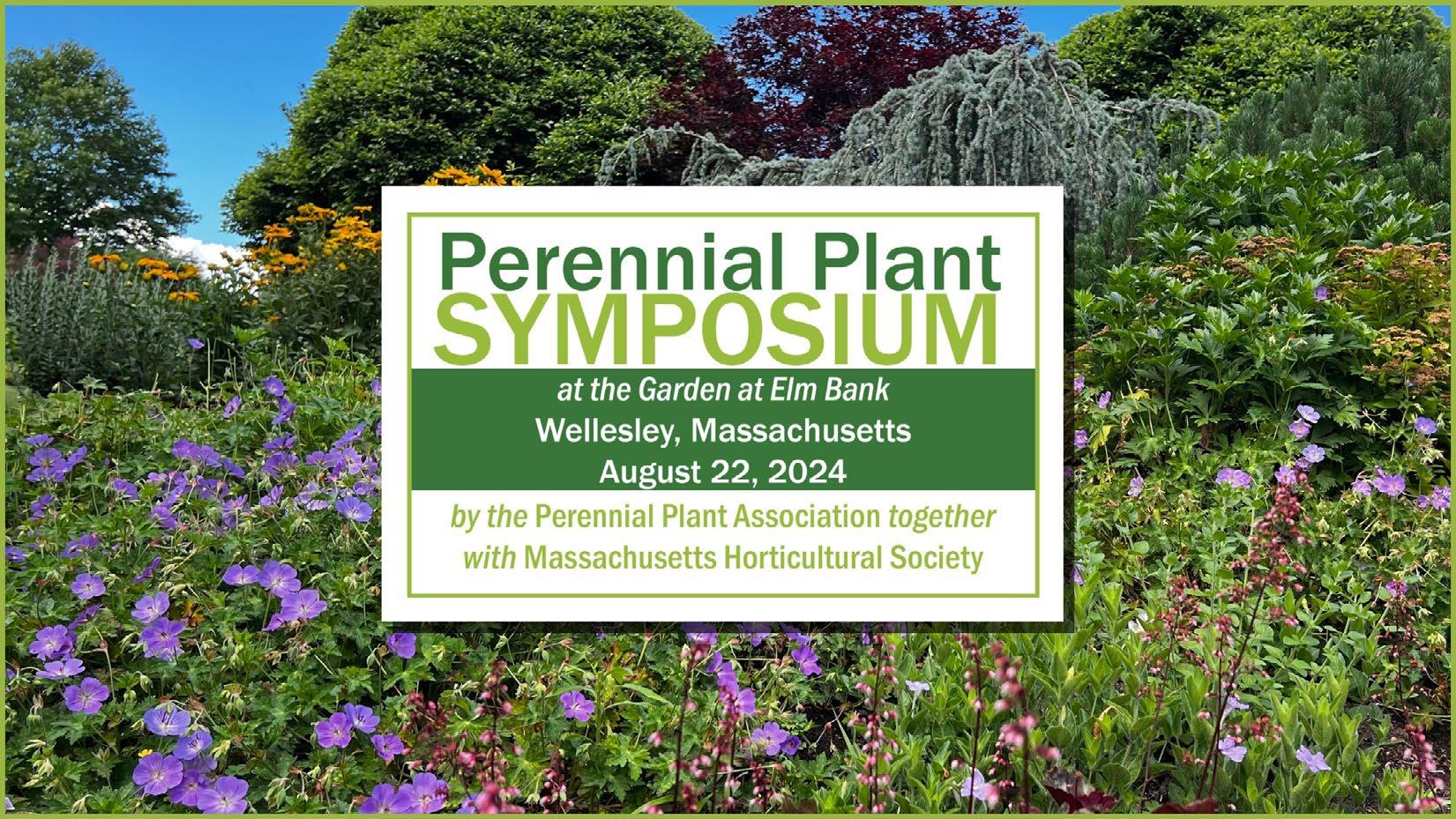

Learn everything you need to know about trends in gardening, horticulture, and landscape design at the Perennial Plant Symposium!
Thursday, August 22 from 9am-3:30pm 4 Speakers | 4 Topics Tour Opportunity Breakfast & Lunch Included
CEU credits available through APLD
General Admission: $149 MHS Members: $109

CROCKETT GARDEN BISTRO TABLES | WEDNESDAYS AT 12PM INCLUDED WITH GARDEN ADMISSION
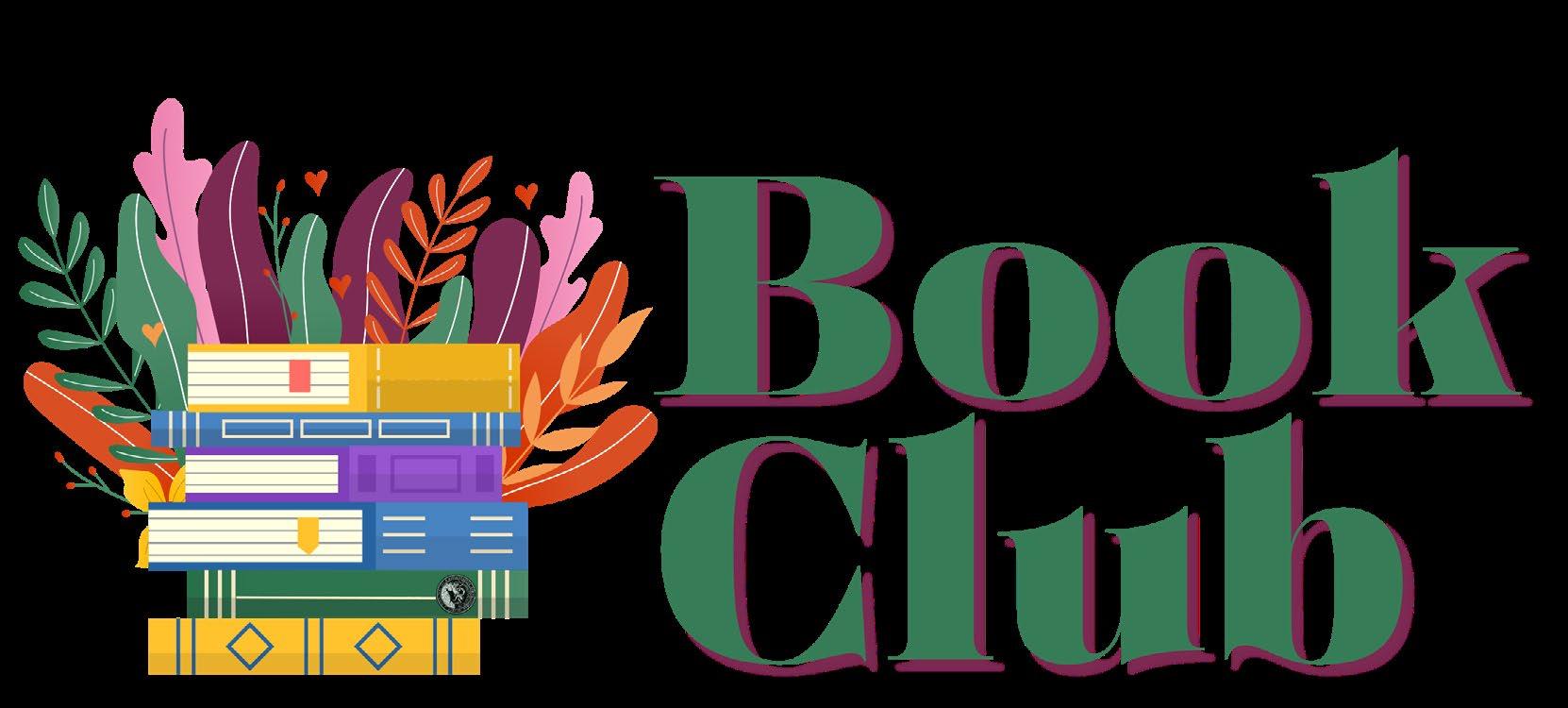
Tuesday, August 20 at 1:30 pm
The Surprising Life of Constance Spry: From Social Reformer to Society Florist by Sue Shepard
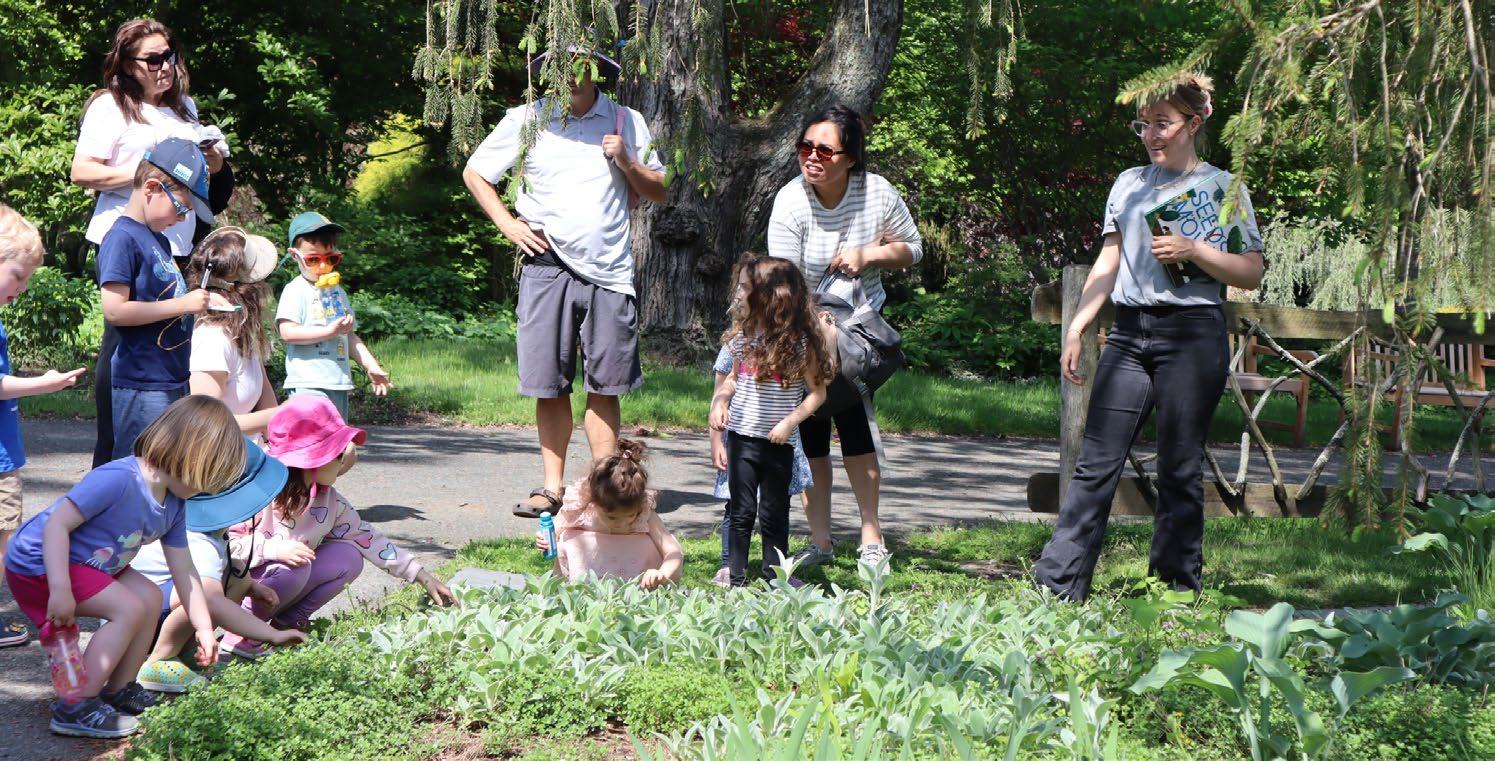
Little Sprouts is a monthly class designed to foster a love and sense of wonder for the outside world in your child. Each month, we will explore a seasonal theme through a 5-senses garden walk, story-time, a hands-on craft or activity, and a take home kit.
AUGUST: SUNFLOWERS | SEPTEMBER: VEGETABLES OCTOBER: LEAVES | NOVEMBER: WINTER HIKE
REGISTER FOR JULY FOR SUNFLOWERS AND PAINTINGS!
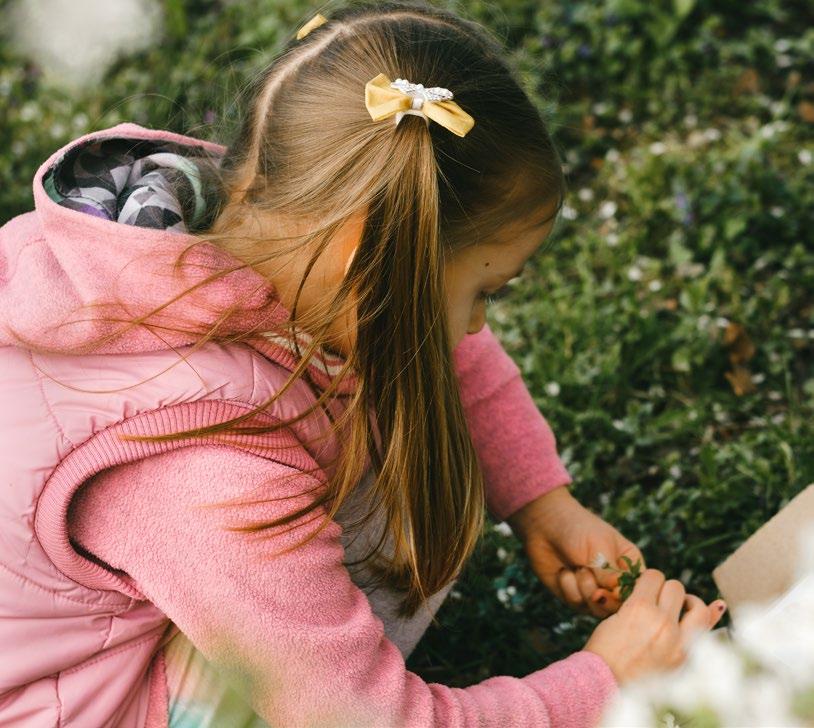
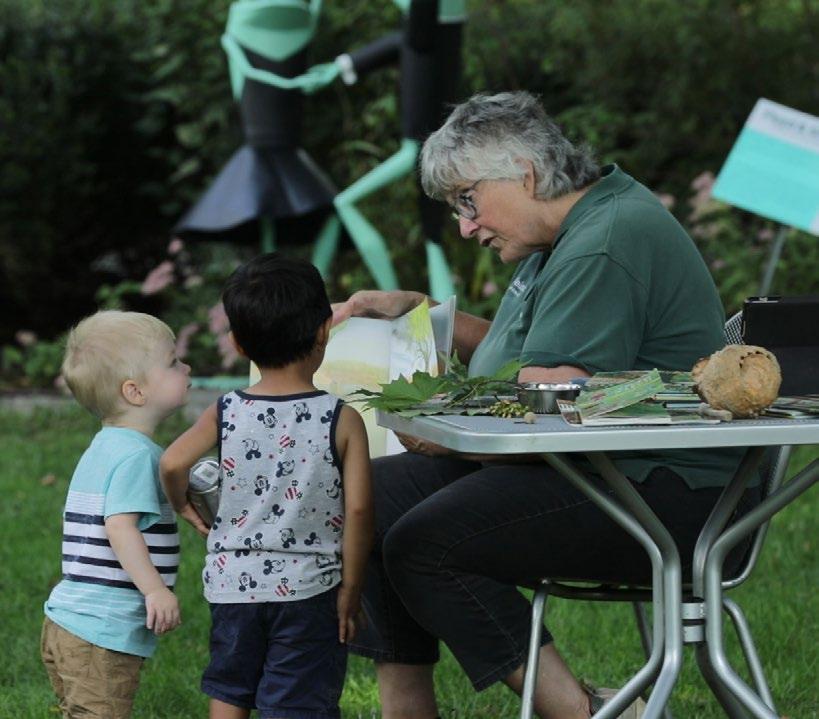
Donated trees feature an entertaining, lighthearted, seasonal, or horticulturally significant theme. Our youngest attendees gravitate toward trees echoing well-known fictional and/or whimsical characters, animals, and sports. Guests of all ages are always excited by trees featuring a selection of gifts either on or under the tree! DONATE A TREE
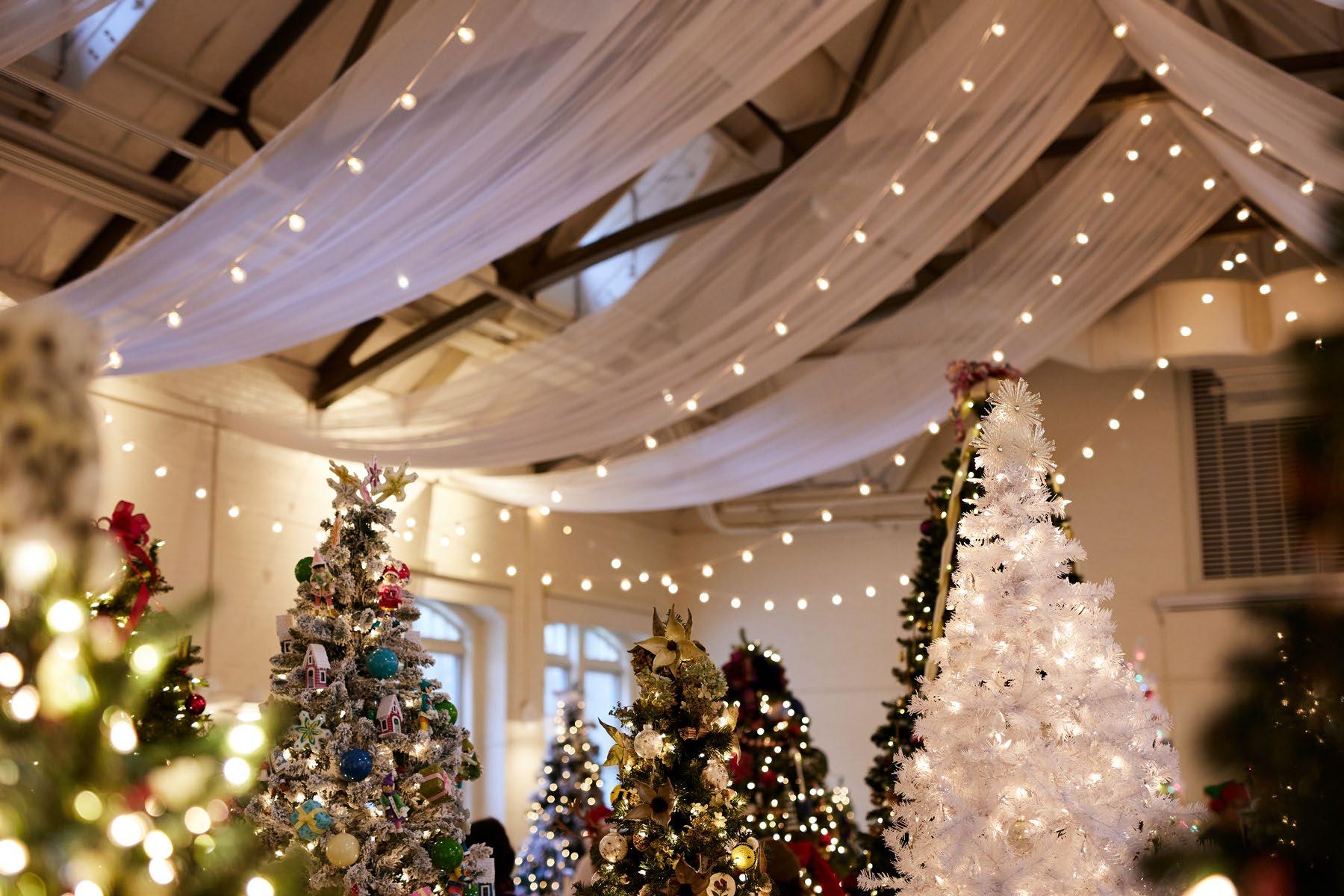
Shop at Green Partner businesses to receive 10% off with your MHS Membership card!

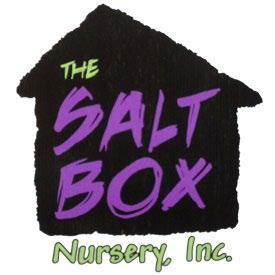
MA

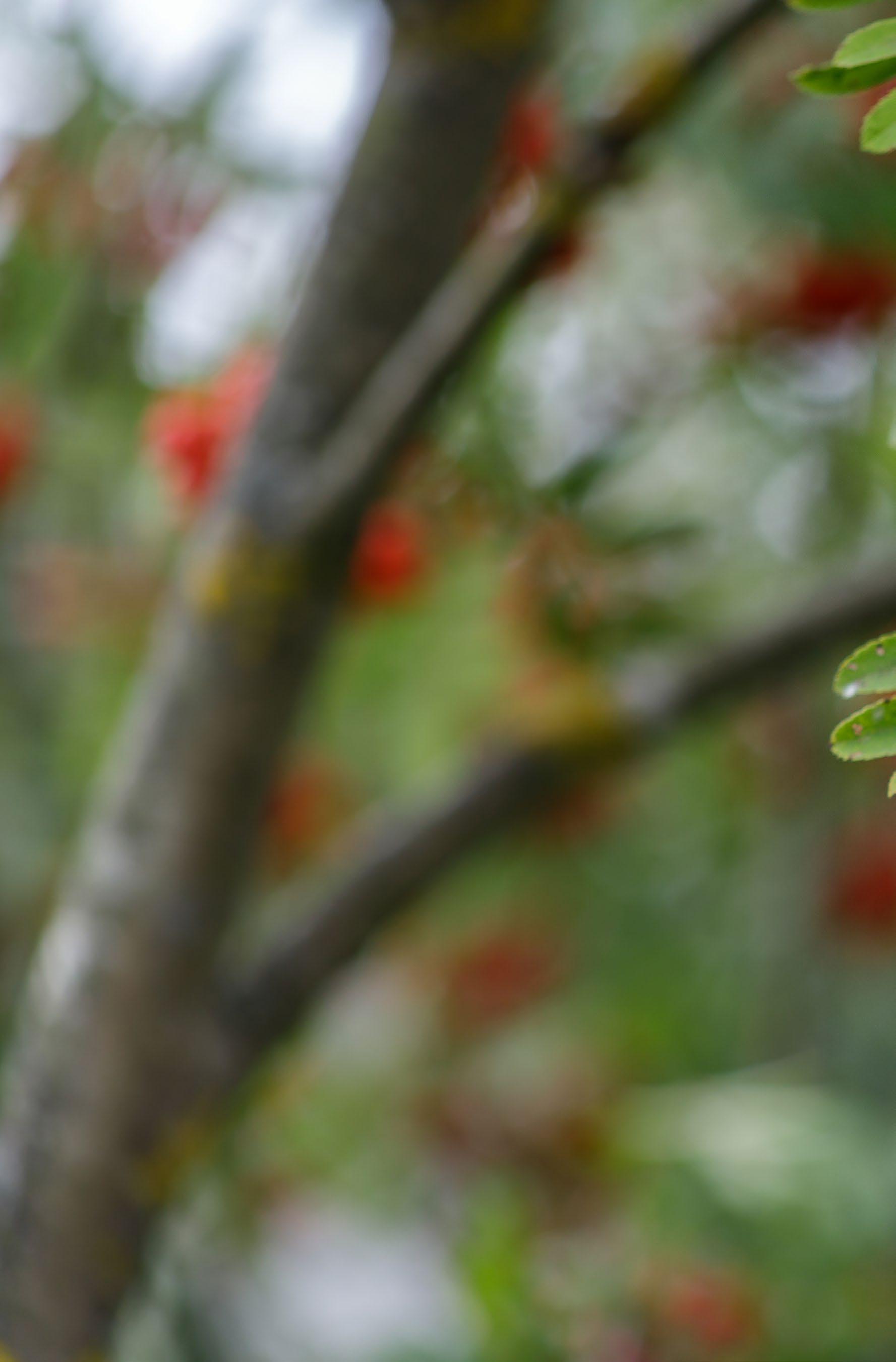

My mother had a recipe book called 500 Recipes: Jams, Pickles and Chutneys and I too have an edition of this and it would be used every summer to make jams and jellies. One year the teenage me, in browsing all the recipes came across one for rowanberry jelly. These are the fruits of the European mountain ash, Sorbus aucuparia, and while I knew the birds loved the berries, I hadn’t thought anything could be done with them as far as humans were concerned. So I convinced my parents to go on a foraging trip and we came back with sufficient berries to give the recipe a go. We should have realized this was not the best of ideas when the smell from the stewing berries
filled the house with a stench that resembled rotten cabbage. Still, I persisted, strained the berries and then boiled up the juice with sugar and lemon juice to make it set. It made a gorgeous bright orange jelly, the same color as the berries themselves and we were all interested to try it. Sunday evening meals in summer were cold cuts and salad, followed by cake or pastries for dessert, which in this case was jam tarts using the new rowanberry jelly. My younger brother was going through a phase of always wanting to eat dessert before the main meal, and on this occasion my exasperated mother decided to indulge him. He took a couple of the tarts while we started eating in a more conventional order. He took a bite and immediately went to spit it out. This was too much for my mother who was obviously well and truly frustrated with my brother’s fussiness. Recruiting my father’s support my brother was told that if he wanted to eat dessert first he should get on and finish it. He did, with difficulty, but it was only when the three of us were ready to also try these tarts that we learnt why my brother didn’t want to eat them. Despite the jelly’s enticing appearance it was extremely sour, even with all the sugar used. My brother did get an apology and while I can’t say that this incident cured him of his desire to eat dessert first, I can
report he soon outgrew this fad and for many years he has eaten conventionally and healthfully, while we as a family have an amusing anecdote.
If we didn’t turn fruit into jam of some sort, the other way it would be preserved would be stored. This was what we would do with apples, of which we could have an excess, but pears never gave us enough to worry about the extras!
The 1990’s gave us a brief fad of preserving fruit in rum. The Rumtopf came to us via Germany and is a means of making a fruit compote with sugar and rum as the preserving agents. In a large lidded crock layers of fruit would be added through summer and fall, adding more sugar and rum to keep the fruit covered. By the holidays it would be ready to use and would be a part of festive meals. My mother-in-law would do this over several years, but this trend didn’t stand the test of time as we all ended up feeling there is only so much alcoholic fruit you can consume!
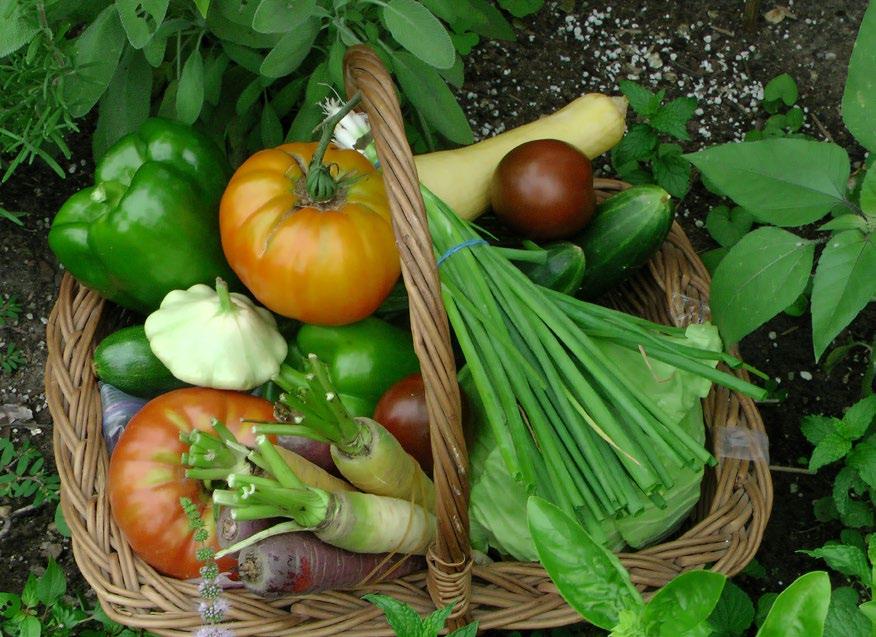
Of course freezing was always an option, although that would be based on how abundant the harvest had been and how much freezer space could be given over to fruit. I have only had a glut of raspberries once, but freezing them provided many opportunities to use them in desserts and muffins. The other thing I have frozen when we have had an excess was tomatoes. This I chose to do having researched what could be done with previously frozen tomatoes. It came down to tomato sauce and salsa - the type that is cooked, not fresh. The nice thing is that it is easy to skin frozen tomatoes: just immerse them in hot water for a couple of minutes and the skin slides off the still frozen fruit which can then be allowed to finish thawing.
However, none of this really helps with an excess of summer squash! It seems that one moment nothing much is happening, and the next there is a profusion all of which are looking to become marrowsized if you turn your back on them for just one day. Funnily enough, my father never grew zucchini/courgettes while I was a child, it was always marrows, which really are just overgrown zucchini. I can’t say I found it an enjoyable vegetable, being
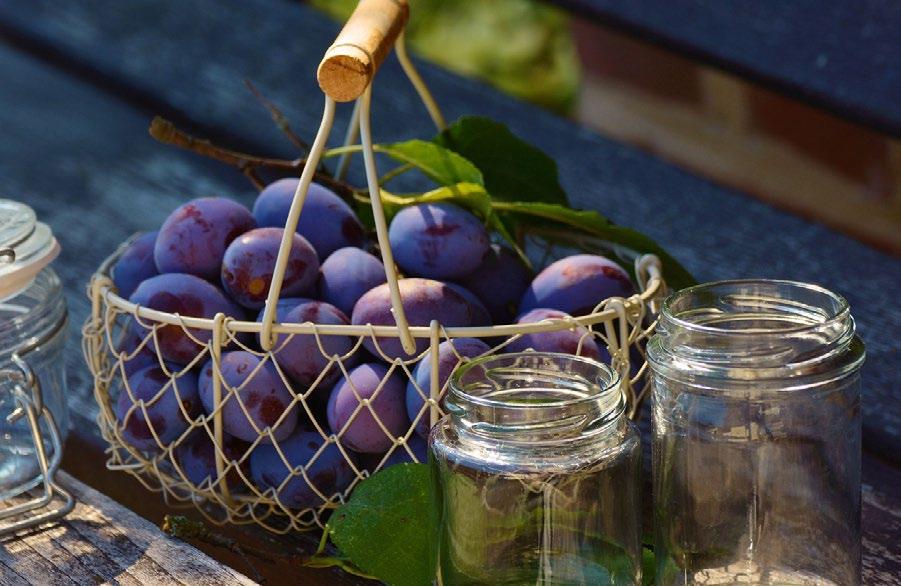
bland and somewhat watery when served boiled. But that was England a number of decades ago and fortunately culinary tastes and skills have improved since then. So if any of my zucchini reach marrow-sized proportions they grace my compost bin! But if there are more than can be used in one go, combining them with tomatoes, peppers, onions and eggplant to make ratatouille is a far more delicious way to use them. Plus the resulting ratatouille can also go in the freezer.
I’m sure those of you who garden, or grew up among gardeners can appreciate that summer abundance can challenge our culinary inventiveness, whether in finding new enjoyable ways to use our harvest as it’s picked, or by preserving it to be enjoyed in the depth of winter when summer warmth is just a memory. And if anyone has a good recipe for using summer squash, I’d be happy to learn of it!
Born in England, Catherine learned to garden from her parents and from that developed a passion for plants. Catherine works assisting customers at the newest Weston Nurseries location in Lincoln. When not at Weston Nurseries, she can often be found in her flower beds or tending to an ever-increasing collection of houseplants.
By John Lee
John shares stories of Bert and Brenda and their gardening wisdom. These chronicles feature recipes, tried-and-true gardening practices, and seasonal struggles and successes. Bert and Brenda were first introduced in the March 2022 issue of Leaflet.
Bert may not have been worldly but he wasn’t born yesterday. Having grown up in a hand-to-mouth generation, he had a deep appreciation of the post‘50’s wonders that made life safer, simpler and maybe less arduous. If nothing else, he clearly understood where his (and most everybody else he knew’s) food came from and just what was required to keep body and soul together. Growing up in New England in the mid-30’s, his family still referred to the fridge as the ‘ice box’ because that was what his parents might have been lucky enough to have. Ice, in those days, was cut from local ponds and hauled to ice-

houses, packed in sawdust and kept in storage until warmer weather required a block or two delivered by the local ice-man every week (unless you were lucky enough to have your own ice-house). In Bert’s early years, refrigeration was not taken for granted even though, by the late ‘40’s, towing icebergs from Antarctica no longer seemed realistic. Even so, in 1977, Prince al Faisal hosted an iceberg-towing conference in Ames, Iowa. He even had flown in chunks of iceberg for cocktail decorations. Needless to say, the idea didn’t fly. Reportedly there are still dreamers who despite the decimation of the world’s glaciers and icepack retraction, still fantasize about what might be considered organic (or historic?) ice. Bert thought this was entirely silly!
Not for nothing, Bert and Brenda’s early years of an uncertain food supply made them keenly aware of the importance of growing your own (long before ‘growing your own’ came to mean something entirely different). His parents, like Brenda’s, were early and inveterate gardeners because in those days there was no social safety net, no food pantry like nowadays to save them from what might have seemed like slow, if certain, starvation. A reliable electrical supply was also dubious at best and refrigeration technology was slow to bring the chest freezer into America’s households. So, everyone put up (viz canned) or root-cellared their summer’s bounty in order to keep the proverbial wolf from the door. A well-built ice box (double walled, gravel-floored and partially subterranean just like a good root cellar banked into a hill) could keep ice from melting until early winter the next year.
All this to say that these days a chest freezer (or two), a 95% reliable supply of electricity and a root cellar kept Bert and Brenda in homegrown year in and year out. Of course, their good fortune was not for everyone. Some of their neighbors down the road claimed to have little time or interest in keeping up a garden. They relied on labor of other unseen and unfamiliar men and women – farmers, truckers, stockers and cashiers (amongst others with whom they need not rub elbows) – to provide the where-with-all to feed themselves and their families. Some said they admired Bert and Brenda’s industry but the time commitment to care for a garden clearly ruled out other preferred daily activities or chosen commitments. In town, most did not have enough side- or back-yard to grow nearly enough food for their families but some did make the modest effort to grow a few salad greens or a couple of tomatoes and a few feet of green beans.
When the last of the area dairies folded, there was a lot of weeping and wailing about town. Some of the ‘town fathers’, now known as the Select Board, urged development to create a better tax base and take some of the revenueproduction pressure off home-owners. Some folk confused ‘preservation’ with ‘conservation’. Others confused increased housing opportunities with a





painful increase in their marginal tax rate which would surely follow as night follows day and crowded classroom space requires a new school. Of course, the best agricultural land is also prime for any kind of development. But here was an opportunity to have all of the land-use boogeymen satisfied and create a singular opportunity for folks without any (or too) little growing space to have a garden and for the local wannabe farmers to have a few acres to grow fresh food for the local market. Bert and Brenda were both old enough to remember when people used to want to grow food for themselves and share in the community that comes from sharing, when occasional paucity was cancelled by the occasional over-production of a neighbor. And maybe that was the real issue. When they sat down in their parlor after their evening meal, the conversation more often than not turned from ‘can we do this another year’ to the pleasures of taking care of themselves together. While they in no way disparaged their supermarket-surfing neighbors, both had remarked, upon occasion, about how lonely food-shopping these days felt. Brenda said she felt more like an item to be processed than a person or social being. Bert thought the line at the check-out was more like the cows coming in for milking.
These thoughts rankled them both. They weren’t much older than the age of the average American farmer these days (reportedly north of 60) and there was a lot of talk about a renewed interest in smalltime farming. Certainly, it was abundantly clear that there are less and less of what might be considered family (or generational) farms and the woes of ill-considered land conversion were plain as the nose on your face. They were both pretty certain that you only had to pick up the paper to understand there was a surplus of uncertainty out there in the world these days and, though it may not look like it today in their neighborhood, what was called ‘food insecurity’ was a looming issue. The idea of the ‘clean plate club’ was only a good idea if there was a plate to clean, or so Brenda opined. The solution to the problem was clearly better regional planning that included planning for families becoming better able to feed themselves with better food than maple-flavored pop-tarts. Maybe folks shouldn’t turn their noses up at the idea of so-called ‘urban farms’. They were really just an extension of the community garden, after all.
John Lee is the retired manager of MHS Gold Medal winner Allandale Farm, Cognoscenti contributor and president of MA Society for Promoting Agriculture. He sits on the UMASS Board of Public Overseers and is a long-time op-ed contributor to Edible Boston and other publications.
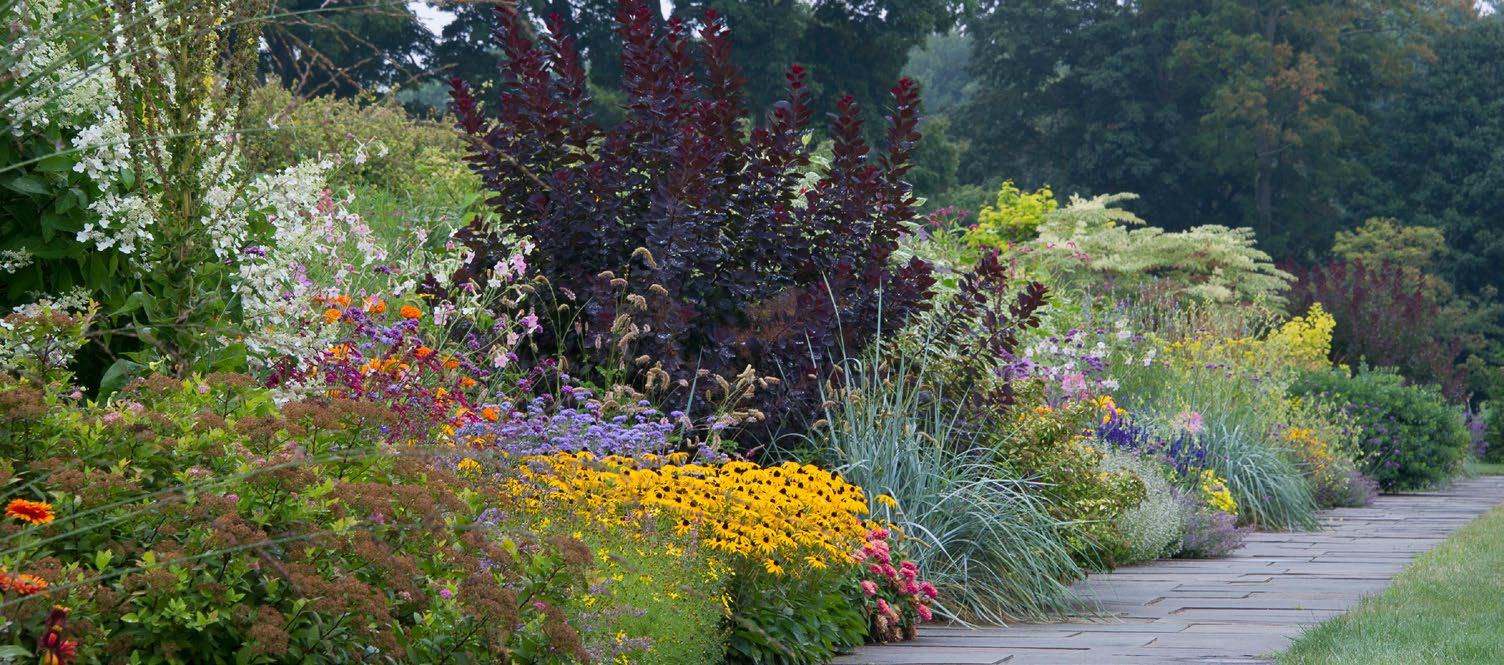
By Elliot Wadsworth
Katherine White is perhaps not so well known as her second husband E.B. White (Stuart Little, Charlotte’s Web, The Elements of Style) but here at White Flower Farm she is equally revered. Ms. White was an editor at The New Yorker magazine from 1925 into the 1950s and towards the end of her tenure she wrote a series of 14 articles about gardening that appeared in the magazine over a dozen or so following years. These pieces were later collected and published in a book called Onward and Upward in the Garden.
What does Ms. White’s resume have to do with White Flower Farm?
To begin, one of White Flower Farm’s founders, Jane Grant, was also a founder of The New Yorker; she and her first husband, Harold Ross, launched the magazine and directed it together in its early years. Grant and Ross divorced in 1929; Grant and her second husband, William Harris, started White Flower Farm in the ‘40s and by 1950 were mailing catalogs. The White Flower Farm catalog was subsequently critiqued by Ms. White in the first of her gardening articles, “A Romp In The Catalogues”. Ms. White describes the White Flower Farm catalog as “a model of clarity, good taste, and good order…” She compliments the writing of Amos Pettingill (William Harris’s pen name, correctly identified by White as “an ill-advised fabrication”) and concludes her review by declaring that “White Flower Farm grows good plants, packages them well, and sends exact and detailed directions with every purchase.” I consider this high praise from an accomplished gardener with strong opinions on both plants and sellers thereof.



Ms. White’s favorable assessment was old news when my father, Eliot Wadsworth II, bought White Flower Farm from Harris in 1976; today it’s positively ancient. It is frequently on my mind, however, as my colleagues and I attempt to position White Flower Farm for another 70 years of service to gardeners. Our challenges sometimes appear insurmountable – we are living, it often feels, in a world that is ever less accommodating of the idiosyncrasies of a small business producing and delivering live goods in the shadow of Amazon and Home Depot. So what can the Leaflet reader expect from White Flower Farm today and in the coming years? First and foremost, the same commitment to plant quality, breadth of offering, and customer service that Ms. White observed way back when. We offer gardeners both longtime favorites and thoroughly vetted new introductions (Rudbeckia ‘Goldsturm’ alongside R. ‘American Gold Rush’), each expertly grown and delivered at the right time for planting. We are expanding our selection of grasses and sedges, in acknowledgement of their prima facie usefulness and the prominence of graminoids in contemporary “naturalistic” planting design. We are gently reorienting our entire offering towards North American natives and particularly those species endemic to the ecoregions of the Northeast. We have begun to offer select species by the flat (counts of 32 or 50) alongside larger individual pots, this to attract those gardeners thinking more in terms of lawn replacement or habitat restoration than traditional perennial borders. Will White Flower Farm ever decline to offer valuable “exotics” like Peonies and Lilies? Not while I’m in charge, but we recognize our responsibility to highlight the


ecological value of including native plants in our home landscapes. The environmental sustainability of our own operations has likewise become a focus – we’ve taken a sizable bite out of our carbon footprint by deploying two large solar energy systems, and we are actively investigating alternatives to the traditional black plastic nursery pot. An increasing proportion of our perennials will, in years to come, be field-grown and delivered bareroot, which is, yes, partly a concession to the significant expense of building new greenhouse capacity but which will also further reduce our consumption of fossil fuels and water.
Our catalog is another challenge and, perhaps, opportunity. One the one hand, it remains an impactful tool for showing our customers what we have to offer for the season at hand. On the other, it’s fundamentally an artifact from a time when trustworthy information about plants and their cultural requirements was scarce; today gardeners have an ocean of information at their fingertips. We still hear from many recipients that they enjoy paging through the catalog, encountering unfamiliar plants and perhaps compiling a shopping list or filling a preliminary (virtual) shopping cart on our website. We fulfill many thousands of catalog requests each year and are yet cognizant that many more wouldbe customers engage with us primarily via the small screen of their smart phone. Our goal, ultimately, is to help gardeners (and would-be gardeners) find the plants and information they need to be successful, whatever success might look like to them. I expect that a small cohort
of customers will continue to be best served by a catalog (and perhaps occasional phone contact with our enormously knowledgeable customer service team) but that the majority will prefer a “digital first” relationship with White Flower Farm. When we misunderstand this distinction and mail an ever more costly catalog to a customer who neither needs nor wants it, we’ve done the customer and ourselves a disservice.
I am enormously proud of the company that my father and his colleagues (many of whom I now have the privilege of working with) built over decades of doing right by our customer. I am confident that there is a place in the market for what we do and that we can be of service to veteran and new gardeners alike. I am delighted to have the opportunity to “think aloud” a bit in front of Leaflet readers and welcome any feedback, suggestions, or even criticisms that readers may care to offer. In the meantime, best wishes from all of us at White Flower Farm. Don’t forget to order bulbs this fall!
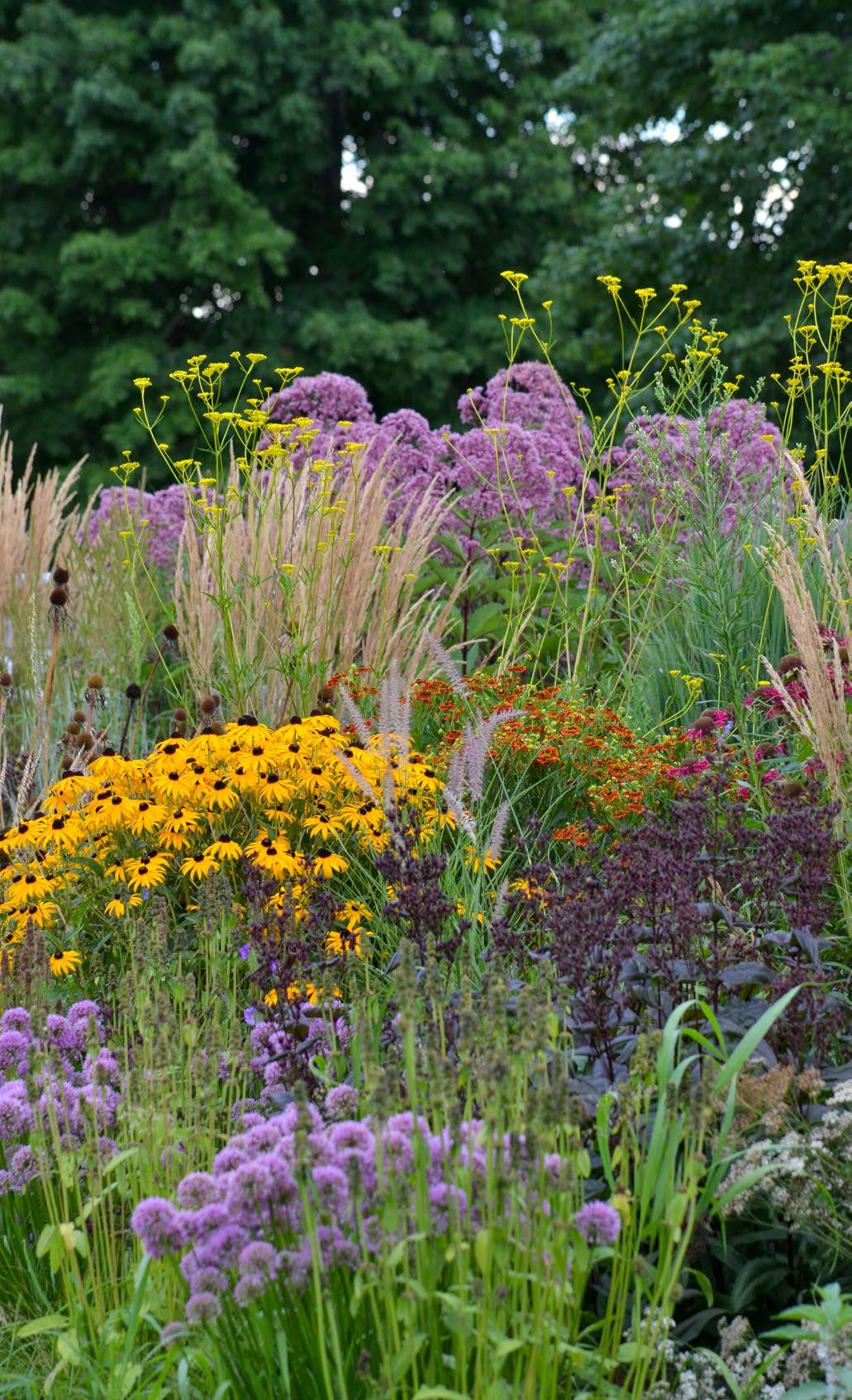
The Wadsworth family has owned and operated White Flower Farm since 1976. Eliot A. Wadsworth has been at the company full time since 2012; he and his family live on the farm. Eliot can be reached any time via eliot@whiteflowerfarm.com.

Orchids are considered the most highly evolved flowering plants on earth. They are unusual in form, uncommonly beautiful in color, often powerfully fragrant, intricate in structure, and different from any other family of plants.
Susan Orlean, Author (b. 1955) The Orchid Thief
The Orchid is the oldest flowering plant in the world. The orchid family, Orchidaceae, is the second largest family of plants with 880 genera and over 30,000 known species. Orchids vary widely in their appearance. The passion for orchids can be obsessive, rooted in the eye, mind and imagination of the beholder. Some orchids are large, beautiful flowers; others are tiny; some are rare and some could be considered ugly.
Orchidmania, also called orchiddelerium, was a Victorian craze for collecting and discovering new species of orchids. Wealthy orchid fanatics of the 19th century funded worldwide expeditions in search of new species of orchids. They built orchid houses on their properties and entered exhibitions to show off their collections. As with tulipmania, new exotic orchids were often sold at extravagant prices at auction. By the early 20th century, the number of new orchids found in the wild was declining, and most new cultivars were created by hybridizers. Today, orchids are ubiquitous. They are cheaply and readily available to consumers in grocery and home improvement store floral departments. Particularly in the off-season, many large botanic gardens produce extraordinary orchid exhibitions.
Feature: Orchids at Massachusetts Horticultural Society (MHS) During the late 19th and early 20th centuries, many MHS members were avid collectors of orchids and the plants were a regular and prominent feature of MHS’ exhibitions. Tours of member orchid houses were featured as well as lectures and scholarly papers read before the Society that were recorded in its Transactions.

Oncidium flexuosum. Orchids from Curtis’s Botanical Magazine, Samuel Springer, Ed., Cambridge University Press, 1986. This print is from Curtis’s Botanical Magazine, 1821. This orchid is commonly known as “Dancing Lady Orchid” and is found in the wild from Brazil to Argentina. MHS Collections.
On June 24, 1836, Marshall P. Wilder exhibited the first orchid to appear in exhibition in America, the Oncidium flexuosum. The plant was "in bloom more than four weeks; its stalk was 27 inches in length, with at one time ninety-seven full, expanded blossoms." It is also known as the “Dancing Lady Orchid.”
Albert Burrage (1859-1931), Society president and benefactor, had the largest orchid collection in the country by the early 20th century. He maintained several orchid houses at his Country Place, “Orchidvale” in Beverly Farms, Massachusetts. He was responsible for MHS’ great Orchid Exhibition from March 24 to 28, 1920. Burrage’s display filled the main hall of the building and included 1500 orchids in naturalistic settings, such as mossy banks and tree bark. He received the 1921 MHS White Medal of Honor in recognition of his establishing the “greatest collection of Orchids the new world has ever seen.” The Royal Horticultural Society awarded him its Medal of Honor for the role he played in the great Orchid Show in 1923 at Hort Hall. Burrage bequeathed his extensive library of horticultural books that was rich in orchid literature to MHS.
In 1921, The American Orchid Society (AOS) was founded at a meeting in Horticultural Hall in Boston. MHS President Burrage was AOS’ first president. MHS member and renowned photographer, Edwin Hale Lincoln (1848–1938) was AOS’ official photographer. In May, 1924, the Society was the host of AOS’s first national exhibition. Admission was free and over 56,000 people attended.
The Roland Gold Medal, designed by Blanche Ames in 1927, is awarded for exceptional skill in the science and practice of hybridization and propagation of ornamental plants. The first medal was given to its eponym, Thomas Roland (1863-1929,) who was particularly fond of cypripediums. The obverse of the medal bears a representation of a cypripedium orchid with the words "Thomas Roland Medal" along the rim.
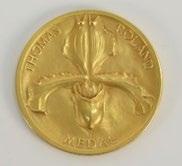
In 1939, the family of photographer Edwin Hale Lincoln donated his glass plates to MHS. These included the negatives for his book Orchids of the North Eastern United States, published in 1931. Lincoln was the recipient of the 1929 Special Centennial Silver Medal “For his unique service to horticulture through his remarkable photographs of wild flowers and especially wild orchids.” In 1932, he received MHS’ Silver Medal “For his unique service to horticulture through his remarkable photographs of wild flowers, especially wild orchids.”
Professor Oakes Ames (1874-1950), MHS Vice President, Professor of Botany at Harvard and supervisor at the Arnold Arboretum, was awarded the White Medal of Honor in 1935 for his work as a botanist, orchid authority and Director of Harvard University's horticultural and botanical collections. He was also the recipient of the 1929 Special Centennial gold medal for his “service to orchidology.”
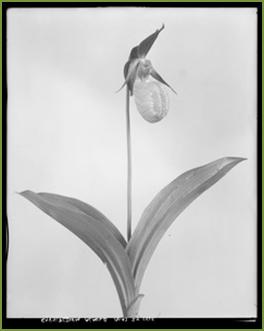
Cypripedium acaule, May 28, 1918. Edwin Hale Lincoln. MHS Collections. This wildflower is commonly known as the Moccasin Flower or Pink Lady’s Slipper. It is a native orchid of New England that flowers in June. It is the state wildflower of New Hampshire. MHS Collections.
Between 1935 and 1996, MHS conferred 12 Honorary medals for accomplishments relating to orchids.
Resources on Orchids in the Library Collections
• 214 books on orchids listed in the online catalog.
• 396 orchid images in the Lincoln Collection glass plates published online at Digital Commonwealth. These include the glass plates negatives for Lincoln’s Orchids of the North Eastern United States, published in 1931.
• 44 orchid botanical prints published online at Digital Commonwealth.
• Additional prints and portfolios are stored at MHS’ off-site archives, including two copies of the first color plate (chromolithographs) book published in the United States: Orchids, The Royal Family of Plants by Harriet Stewart Miner; Boston, 1885.
• Photographs of exhibitions, gardens, etc., that feature orchids.
• Illustrations in historical periodicals such as Curtis’s Botanical Magazine.
• 116 pamphlets relating to orchids.
• MHS Transactions included lectures, descriptions of exhibitions, gardens, etc.
• Additional resources are found in the vertical files.

A practical treatise on the management of orchidaceous plants by J. C. Lyons is the oldest book in the Library on orchids and was published in 1845. This well-used book is very fragile and stored in a protective cover. MHS Collections.
Broadway Debut of the Cattleya Orchid; Transactions of MHS, 1901, p. 76-77
“A previously unknown orchid, Cattleya, made its first public appearance at a Broadway, New York City flower shop.
‘A noted beau who called in every morning for his boutonnière was always looking for something new. The proprietor had obtained a Cattleya flower and had it safely stored in the ice box awaiting his appearance. He came. Reverently the flower was placed in his buttonhole; silently he was turned toward the mirror. There was an air of mystery, the play of an artist, about the whole performance and then, the climax, $25 for the flower, which was paid with alacrity.’
The same gentleman came for many days for his orchid, as with many new species, the price dropped to $15.”
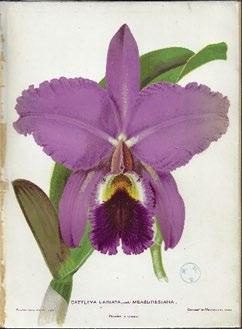
Cattleya Labiata, var. Measuresiana, Chromolithograph “painted from nature,” by J.L. Macfarlane FRHS (1836–c.1913); artist and Lithographer, from the book The Woodlands Orchids described and Illustrated: With Stories Of OrchidCollecting by Frederick Boyle, London: 1901. MHS Collections.
Cattleya orchids, often called "Queen of Orchids," are easy to grow and were popular in the early to mid-20th century. They were particularly favored for corsages.
The next meeting of the Book Club is on Tuesday, August 20th at 1:30 pm. in the Crockett Garden. The club will be discussing The Surprising Life of Constance Spry: From Social Reformer to Society Florist by Sue Shepard. All are welcome to attend.
This is the schedule for the Club’s upcoming book discussions:
August 20
The Surprising Life of Constance Spry: From Social Reformer to Society Florist by Sue Shepard

September 17
American Eden by Victoria Johnson
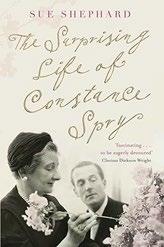

October 15
Mischievous Creatures by Catherine McNeur
COME VISIT!

November 19
The Story of Flowers and how they changed the way we live by Noel Kingsbury
The Library is open on Thursdays from 10am - 1pm and by appointment. Please email Library & Archives Manager Maureen O’Brien for an appointment if you want to schedule a visit.
